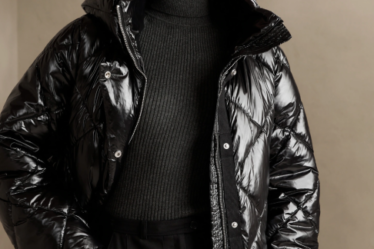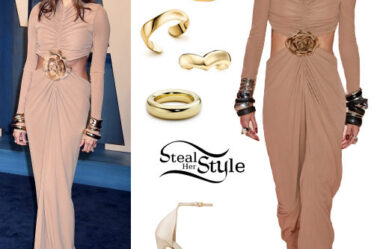
By 2025, virtual and augmented reality is expected to become an $80 billion market, according to the Goldman Sachs Technology Research Group. The blending of the physical and virtual, by leveraging AR technology, brings with it increased opportunities for fashion: accelerating or shaping new paths to purchase; boosting brand discoverability; connecting event and commerce strategies; and tapping into an emerging new Creator Economy.
Held in New York’s Polo Bar under the Chatham House Rule, the event was designed to update market leaders on the size and nature of the AR opportunity, supported by data and insights from Snap Inc., before inviting attendees to share their own learnings in incorporating AR into their businesses, discussing with their peers both the challenges they have overcome and those they foresee in the future.
Hosted in partnership with Snap Inc. and moderated by BoF’s Rahul Malik, the conversation was attended by a roster of c-suite executives from the likes of Amazon Fashion, Diane Von Furstenberg, Fendi, Givenchy, Tom Ford and LVMH, among others.
Innovating the Path to Purchase
From AR try-on and the use of LiDar to accurately estimate a user’s shoe size or filters as a frictionless barrier to entry, new technology is emerging as a powerful tool in improving customer experience. With over 110 million people in the US alone set to use AR at least once per month by 2023, its potential is growing. Snap “Lenses” are used by over 250 million Snapchat users every day.
“I think Fendi has [succeeded in] using it for highlighting the brand with more awareness and enticing but activating try on. Many of these brands have done a really great job of knowing when to use a highly creative lens versus a more simple, let’s just play and try on the products,” were some of the opening comments from a guest.
“Depending on what that purchase point of that product is to the reality of how they can swipe up around the website or even purchase — I think there’s definitely different templates and different use cases to tap into, bringing the world of a brand to the consumer versus having someone actually play with the integral product,” they continued.
Indeed, 86 percent of US brands who use AR say it helps boost sales, acquire new customers and drive performance metrics, as found in Snap Inc.’s “Augmentality Shift” report, in partnership with market research group Ipsos.
AR is also a cost-efficient way to encourage consumers to engage with products. Some businesses are achieving less than $0.01 US cents per try-on for their products. For example, through its incorporation of catalogue-powered Shopping Lenses via Snap Inc., American Eagle enabled users to actively engage with and purchase products. The result — lenses driving more than 11 million impressions, with the brand drive higher than average in terms of reach and engagement.
This is not just utility for consumers that you’re trying to bring into the brand. It’s also something that continues to excite your clients.
“Our client advisors were empowered to share this experience with their clients and use it as a way of product discovery and excitement,” said an attendee.
The conversation shifted to focusing on uniting the AR experience with conversion and building customer awareness. “We’re seeing AR shopping in mainstream, having the ability not just to see, but having the ability to try them on themselves,” said a Snap Inc. representative. “Ultimately, that’s what is driving the excitement around shopping. You now have an opportunity to experience product launches, bags, sneakers, jewellery and watches — it’s a convenience factor.”
However, “how does one navigate that tension of using a product that is cutting edge and therefore still evolving?” asked one participant.
“Oftentimes, new things can scare people. But for us, it’s more about looking at what direction consumerism is heading in, what’s resonating and then being able to back into that with something that makes sense,” a Snap Inc. representative shared with the group.
“I think it has to happen more frequently and consumers will then essentially expect it from you. It can’t be something that you do as a one-off, kitschy idea,” said another guest.
Merging Physical and Digital Events
Shopify research suggests that 66 percent of end consumers are interested in using AR for help when making purchasing decisions, and by 2025, nearly 75 percent of the global population — and almost all smartphone users — will be frequent AR users.
Saïd Business School reports how sensory marketing could be pivotal in breaking through to consumers who are increasingly indifferent to online advertising — a Magma Global study found 84 percent of smartphone users skip adverts while on the go, particularly among younger demographics.
As AR glasses move towards the mainstream — Snap’s Spectacles 3 use two cameras to build out 3D photos and videos — consumers will soon be equipped with the hardware to help seamlessly blend physical and digital spaces throughout the day.
“From a consumer experience [standpoint] and cultural relevance also, I’d be curious how one really delivers upon that kind of authenticity in this context,” said one attendee.
Vogue X Snapchat: Redefining the Body showcased designs from seven fashion brands — Balenciaga, Dior, Gucci, Kenneth Ize, Richard Quinn, Stella McCartney and Versace — and used custom Snapchat Lenses to enhance the experience further through virtual try-ons as an immersive world with archive, contemporary and exclusive pieces.
New things can scare people. But it’s more about looking at what direction consumerism is heading in, what’s resonating.
“Figuring out how to use it from a full funnel perspective — [with the] simplification of every shoe and eyewear brand and having a partnership where you have 3D assets — we’re always on shopping experience with Snap for those products that are more realistic and shoppable, probably not impacting the purchase decision-making process as well. But beyond that, they have taken the approach from a branding and experiential perspective,” added a guest.
Tapping into a New Creator Economy
Snap Inc. has created a Creator Marketplace, providing opportunities for over 250,000 creators, developers and partners to build millions of AR experiences and connect them to brands and agencies looking to enhance the sales experience and searching for AR talent.
“We have already observed that new technology creates friction with consumers. As a leader in AR, our ambitions are way ahead of where the consumer is today,” said a Snap Inc. representative. “With spectacles, we have only now made them available to creators to leverage from a creative experience. We firmly believe in the power of AR — it [just] requires patience and time before it goes mainstream and is more scalable.”
Another example is Landmarker, a unique lens experience that tracks the visual features of a specific physical location, or landmark, at various global locations. Through this lens, you can create a 3D experience connected to the architecture.
“There’s a really strong point about how Snapchat is helping to condition users around certain behaviours that can then be adopted, agnostic to Snapchat,” said one attendee.
“Thinking about how the video game industry works because for Gen-Z and younger millennials, it’s the same way that we all watch TV, that applies to millennials and older video games. It’s not a nerd thing anymore — everyone plays video games, and that’s trained a lot of kids around certain [user interfaces], certain cues that are specific from video games,” they said.
Disclaimer: Snap Inc. executives elected to exempt themselves from the Chatham House Rule for this article.
This is a sponsored feature paid for by Snap Inc. as part of a BoF partnership.



